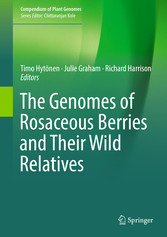Suche
Lesesoftware
Specials
Info / Kontakt
The Genomes of Rosaceous Berries and Their Wild Relatives
von: Timo Hytönen, Julie Graham, Richard Harrison
Springer-Verlag, 2018
ISBN: 9783319760209 , 212 Seiten
Format: PDF
Kopierschutz: Wasserzeichen



Preis: 149,79 EUR
eBook anfordern 







